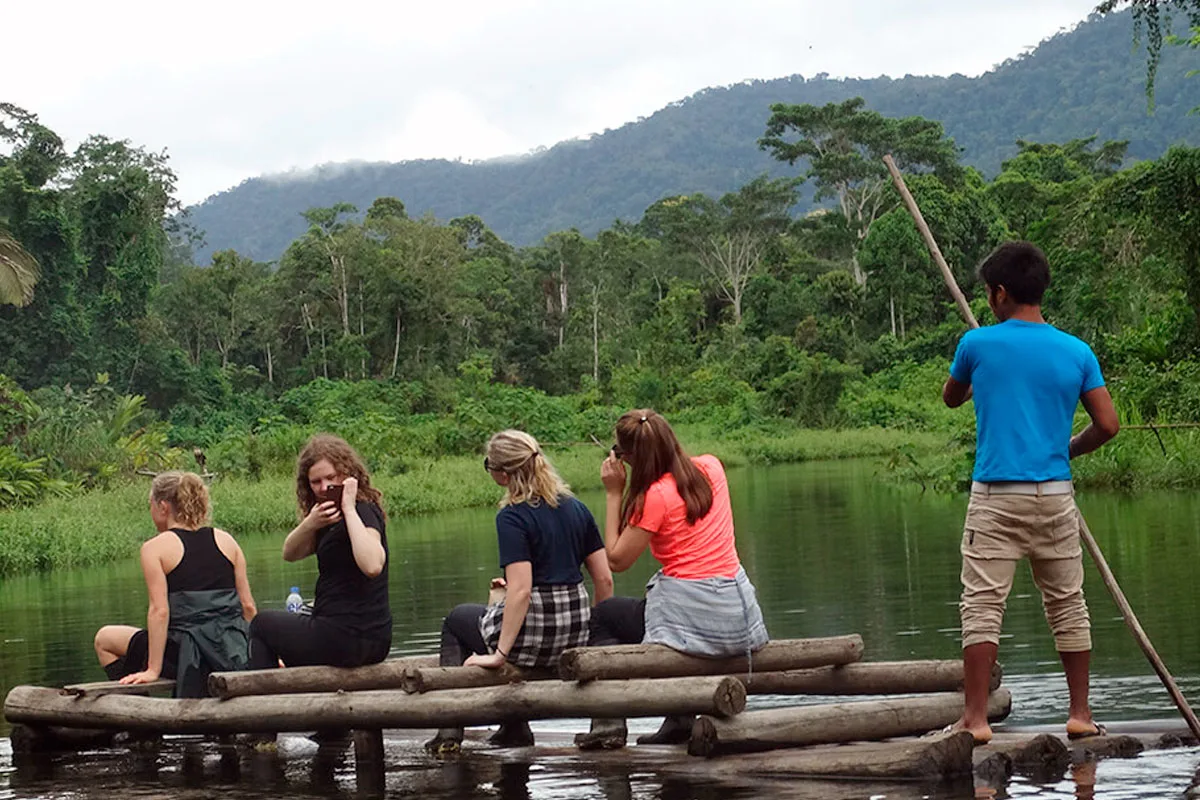The Cultural Zone of Manu is one of the three sections of Manu National Park, in southeastern Peru. It includes high mountains, Andean cloud forests, and lowland tropical rainforests, where indigenous communities and settlers dedicated to agriculture and handicrafts live. This region is famous for its biodiversity, as more than 8,000 plant species, 400 bird species, and 10 mammal species have been identified in the Manu cloud forest. The Excursion to the Cultural Zone of Manu offers travelers the opportunity to explore an almost untouched environment filled with exotic flora and fauna, as well as pre-Inca cultural remains.
Where is the Cultural Zone of Manu and what is its climate like?
The Cultural Zone of Manu is located in southeastern Peru, in the transition between the Andes and the Amazon. It is in the regions of Cusco and Madre de Dios, south of the city of Cusco and close to the lowland rainforest of the Madre de Dios River. Entry to this zone is via the Manu Road, which crosses mountain valleys and cloud forests before reaching the tropical rainforest. Passing through Abra Acjanaco, you can see a sea of clouds over the cloud forest — a characteristic landscape before descending toward Pilcopata. This protected area serves as a buffer zone of the park and is accessible from Cusco or Puerto Maldonado via land and river routes.
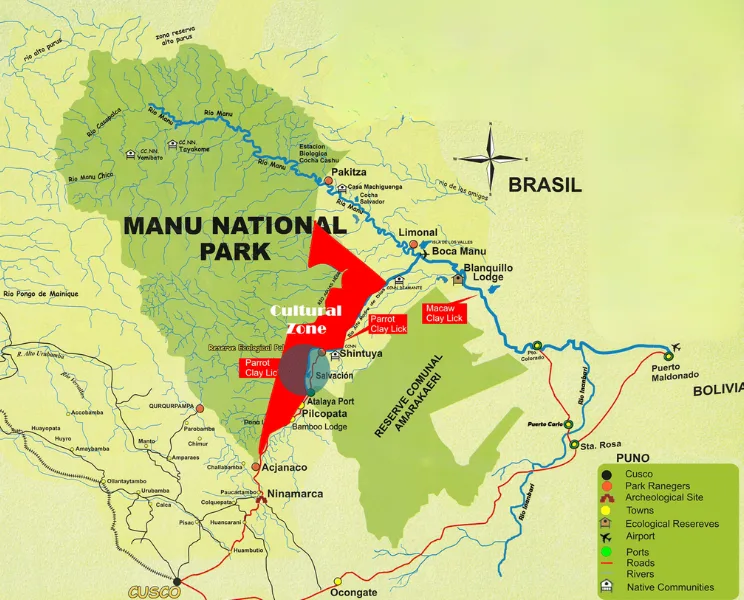
The tropical climate of Manu is warm and rainy most of the year. The average temperature in the rainforest is around 26–30°C (78–86°F), with cooler nights in the highlands. Annual rainfall exceeds 3,000 mm (118 in), concentrated between December and March. The best time for the excursion coincides with the dry season (May to October), when rainfall is lower and trails are more passable. Between June and August, you’ll find the most pleasant weather, with clearer skies and better visibility.
How to get from Cusco to the Cultural Zone of Manu
The typical route starts early in the morning from Cusco, taking the Manu Road southeast. The journey by land usually includes a stop at the Ninamarca funerary towers, a pre-Inca cemetery near Paucartambo. Then you cross the Andean puna and descend through a narrow jungle road toward Pilcopata and the port of Atalaya.
From Puerto Atalaya, you take a motorized canoe along the upper Madre de Dios River to the ecolodges or accommodations in the cultural zone. This combined trip by minivan or bus and boat usually takes several hours, passing through landscapes that change from the Andes to the tropical rainforest. Tours include accommodation, meals, and expert guides, as well as stops at points of interest such as the cloud forest, home of the Andean Cock-of-the-Rock.
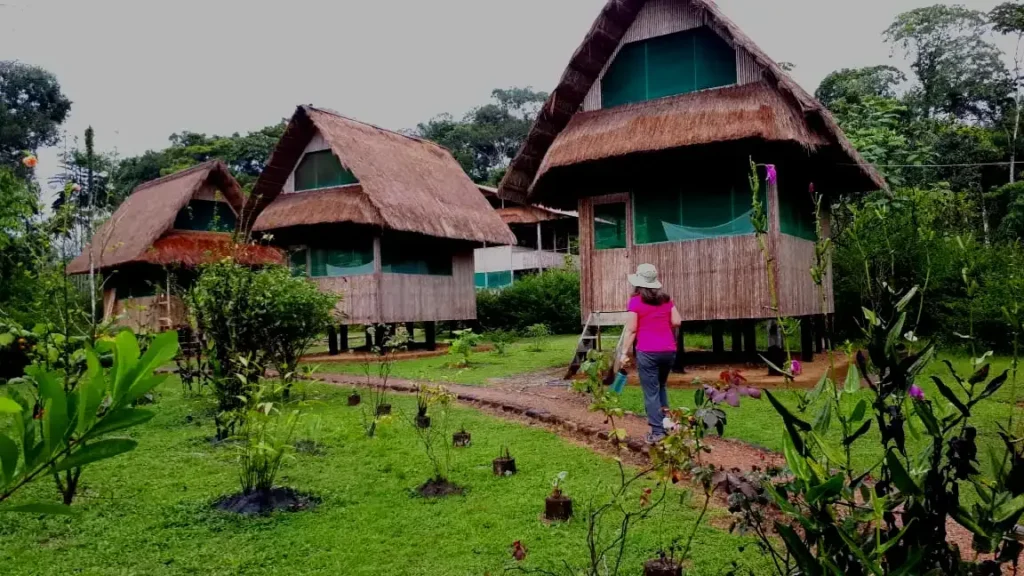
In short, every Excursion to the Cultural Zone of Manu involves first traveling to Pilcopata and then transferring by boat along the Madre de Dios River.
Best Activities in the Cultural Zone of Manu
Among the best activities, the following stand out:
- Observation of the Andean cock-of-the-rock. The famous Andean cock-of-the-rock (Rupicola peruviana), national bird of Peru, performs a spectacular mating dance in Manu’s cloud forests. From special platforms, you can watch several bright orange males displaying in the tall vegetation.
- Tour to the Ninamarca chullpas. These are ancient pre-Inca funerary towers located near Paucartambo. The tour offers insight into this pre-Inca cemetery and local culture.
- Raft ride on Cocha Machuwasi. A totora reed raft takes you to Machuwasi Lagoon, home to herons, ducks, and birds like the hoatzin. It is ideal for bird and jungle landscape photography.
- Macaw and parrot clay licks. Visit clay walls known as collpas, where at dawn colorful macaws, parrots, and parakeets arrive to feed on minerals. This natural spectacle is unique.
- Hikes through the cloud forest. The Andean cloud forest shelters orchids, bromeliads, ferns, and wildlife such as the spectacled bear and howler monkeys.
- Visit to native communities. Some tours include interaction with Matsiguenga communities, where locals share their traditions, handicrafts, and jungle knowledge.
- Atalaya hot springs. In the community of Shintuya, you can enjoy natural thermal waters.
- Sightings of exotic birds. In addition to the cock-of-the-rock and parrots, Manu is home to toucans, hummingbirds, woodpeckers, and many other species.
- Zipline and canopy: optional for adventure lovers.
Each day of the Excursion to the Cultural Zone of Manu blends adventure, nature, and culture.
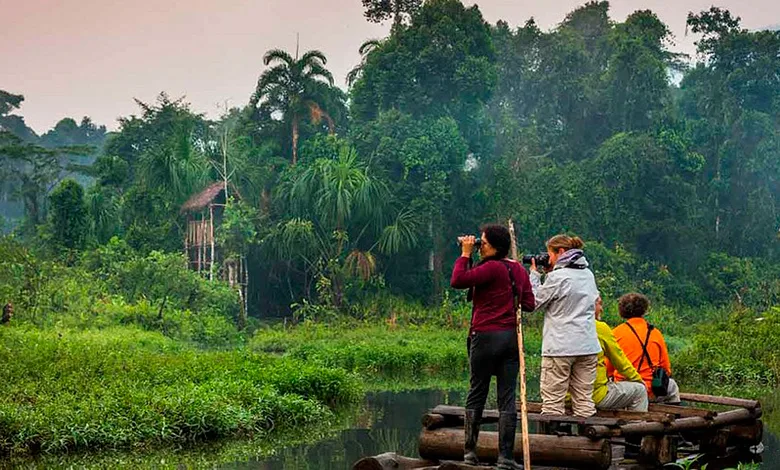
When is the Best Time of Year to Visit?
The best season for the Excursion to the Cultural Zone of Manu is the dry season, from May to October.. During these months, rainfall is lower, the climate is more stable, and there are fewer mosquitoes, making hikes and wildlife watching easier. You can also enjoy spectacular sunrises and safer trails. From November to April, however, rainfall is heavier, humidity is high, and some access routes may become difficult.
Wildlife and Biodiversity
Manu is home to over 1,000 bird species and 200 mammal species. Among the most iconic animals are the jaguar, spectacled bear, giant river otter, spider monkey, howler monkey, and capuchin monkey. You can also find anacondas, turtles, caimans, tropical frogs, and sloths.
Among the birds, in addition to macaws and the Andean cock-of-the-rock, toucans and hummingbirds stand out.
Flora includes orchids, bromeliads, ferns, coconut palms, and giant ceiba trees. This richness led UNESCO to declare Manu a Biosphere Reserve. During the excursion, you can also see exotic butterflies, tree frogs, and tropical fish.
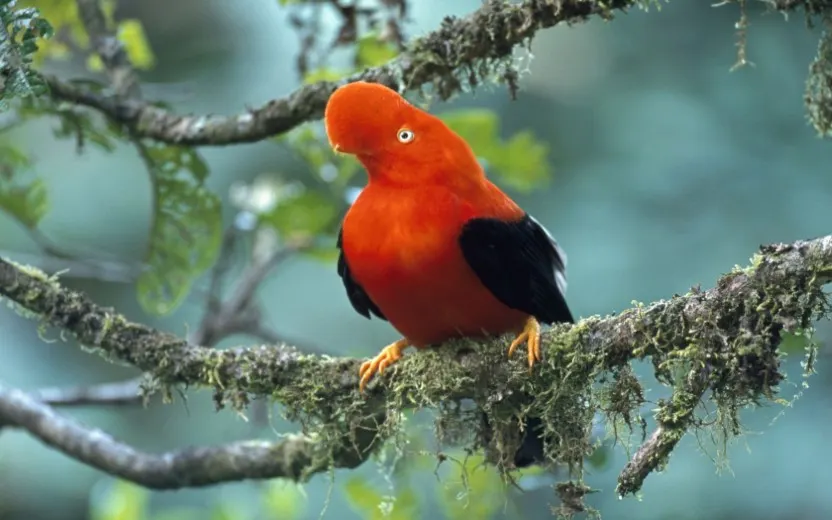
Tips and Recommendations for the excursion to the Cultural Zone of Manu
- Choose a reliable agency. It is recommended to book in advance with a specialized operator. For example, Peru Jungle Trips is a well-known Peruvian company that offers complete and sustainable tours to Manu.
- Documentation and money. Bring your ID or passport, and cash in Peruvian soles for small purchases.
- Appropriate clothing: light, quick-drying clothing, trekking boots, cap, rain jacket, insect repellent, and sunscreen.
- Physical preparation: basic good physical condition to walk on uneven terrain.
- Hydration and food: carry a reusable water bottle and snacks.
- Specialized guide: essential for safety and a more enriching experience.
- Respect nature: do not leave trash and avoid loud noises.
- River safety: always wear a life jacket.
- Health: yellow fever vaccination and a basic first-aid kit are recommended.
- Extra equipment: camera, binoculars, flashlight, and extra clothing.
- Book in advance: especially during high season.
Frequently Asked Questions about excursion to the Cultural Zone of Manu
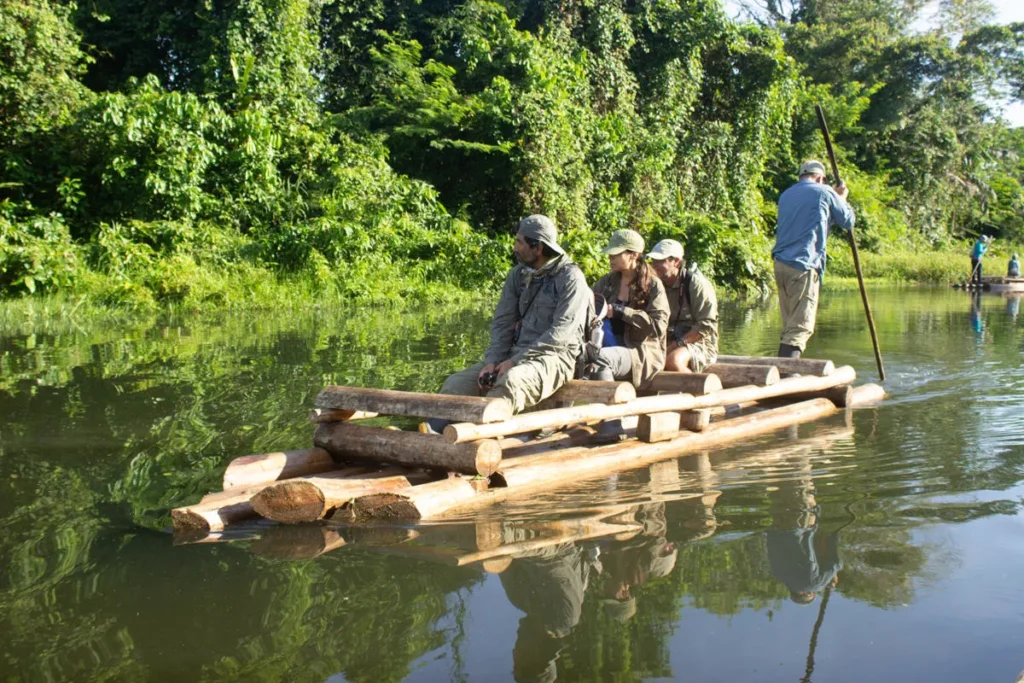
1. What is included in the Cultural Zone of Manu tour?
Bus and boat transportation, accommodation, meals, bilingual guides, park entrance fees, and basic equipment. Guided activities are usually included, such as interpretive hikes, boat rides for wildlife watching, and talks about the local biodiversity and culture.
2. Is the hike during the Cultural Zone of Manu excursion difficult?
No. They are short routes of low to medium difficulty, suitable for most people. The hikes are usually done at a relaxed pace, with stops to observe animals and plants, so even people without prior trekking experience can enjoy them.
3. Where do you usually sleep during tours in Manu?
In eco-lodges or rustic lodges with beds, mosquito nets, and private bathrooms. These accommodations are designed to integrate with nature, offering basic comfort and a cozy atmosphere, perfect for resting after the day’s activities.
4. What clothing should I bring for the Cultural Zone of Manu excursion?
Lightweight long-sleeved clothing, trekking pants, rubber boots, rain jacket, hat, and insect repellent. It is also advisable to bring an extra set of clothes, comfortable socks, and sunglasses to protect yourself from humidity and Amazonian sun.
5. Is there cell phone signal in the Cultural Zone of Manu?
No, the area is remote and without coverage. This is part of the experience, as it allows you to fully disconnect from routine, enjoy the natural surroundings, and focus on activities without technological distractions.
6. What is the difference between the Cultural Zone and the Manu National Reserve?
The Cultural Zone is more accessible and inhabited; the National Reserve is virgin rainforest with restricted access. In the Cultural Zone, there are communities, basic services, and tourist activities, while the Reserve protects pristine areas with minimal human intervention.
7. Why choose Peru Jungle Trips?
Because their expert guides, own transportation, selected accommodations, and local knowledge guarantee a safe, complete, and unforgettable experience. Their personalized service and commitment to sustainability make the excursion unique and enriching.

The Cultural Zone of Manu excursion takes you to a natural paradise in southeastern Peru, between Andean mountains and tropical rainforests. You will see the Andean cock-of-the-rock, macaws, and Amazonian mammals, visit native communities, and enjoy unique landscapes. Ideal for nature and culture lovers, with safe guided activities and eco-friendly lodging. Contact us and book your Manu trip today.

